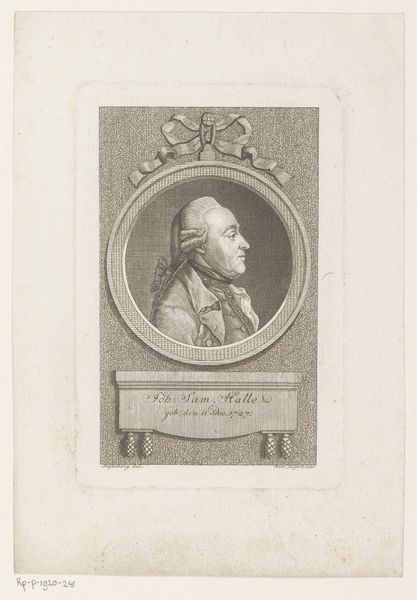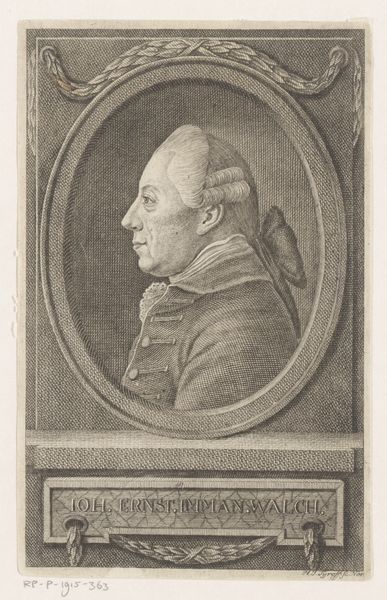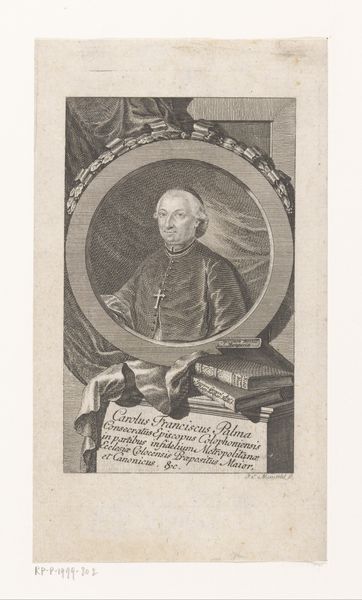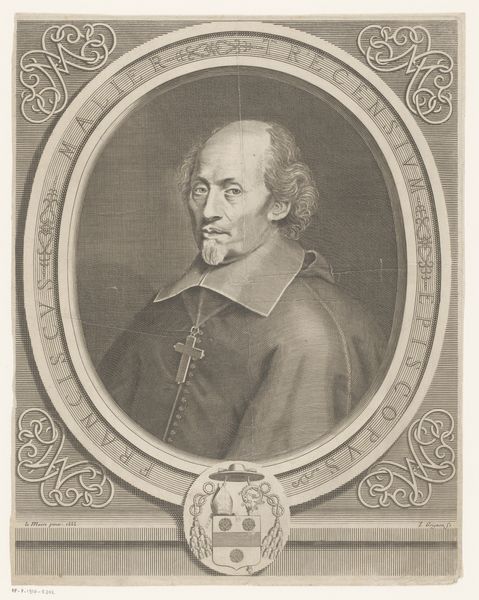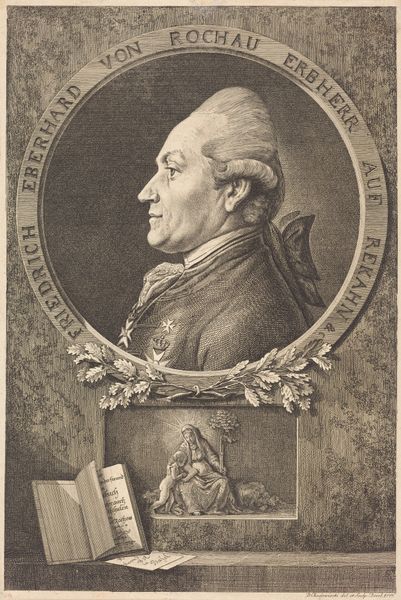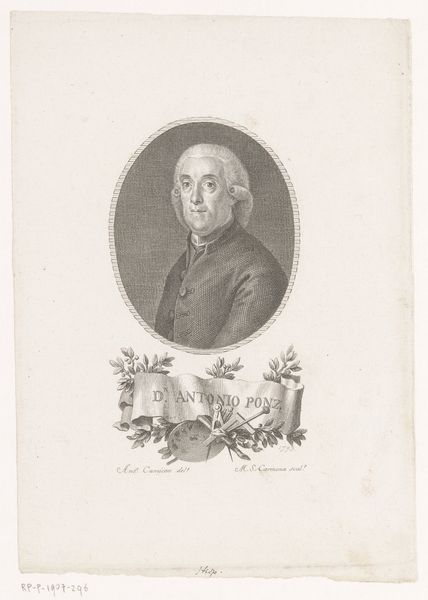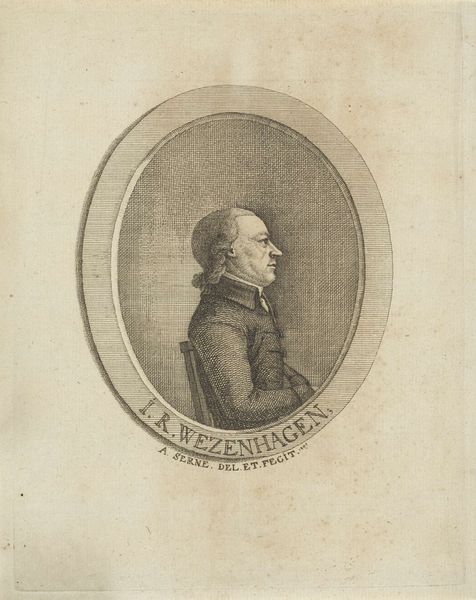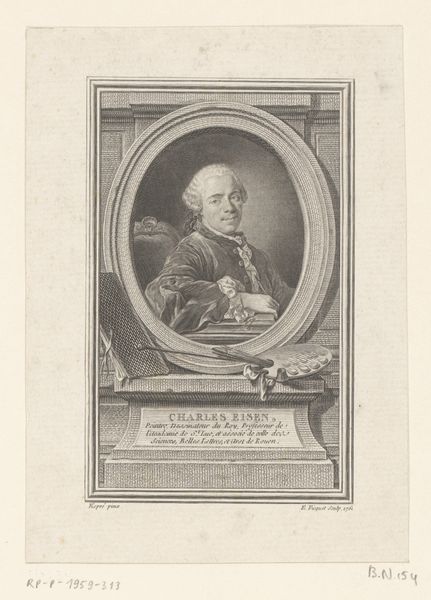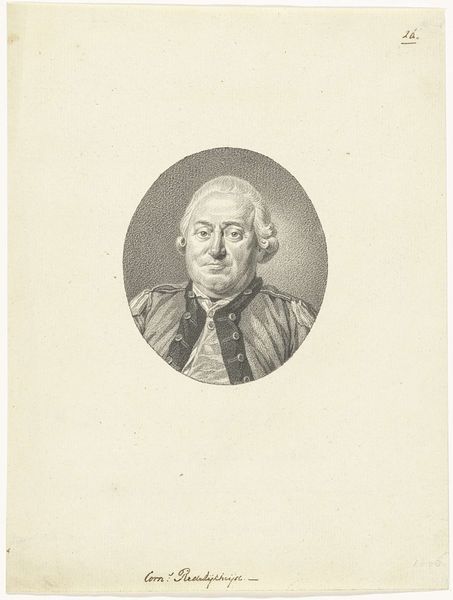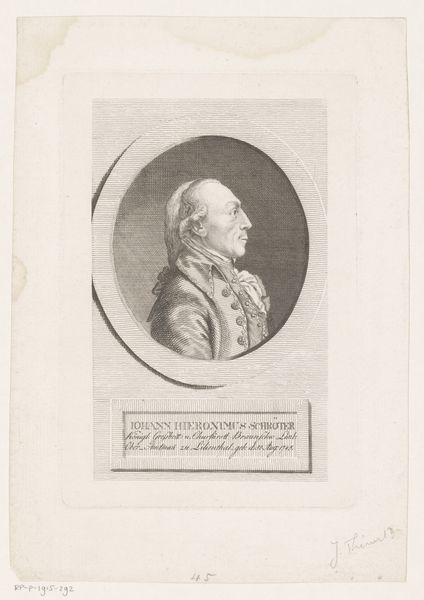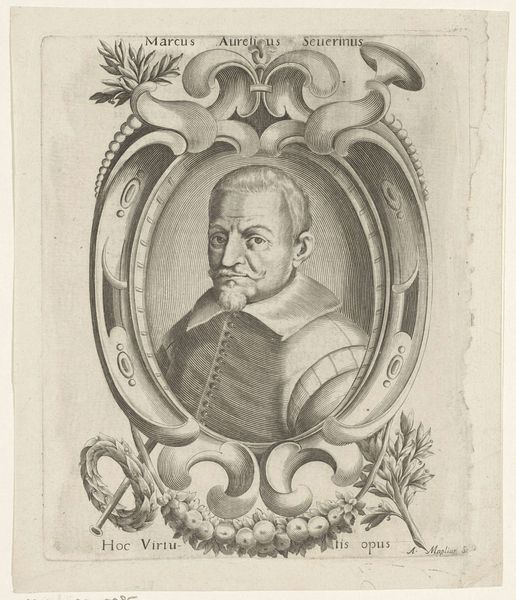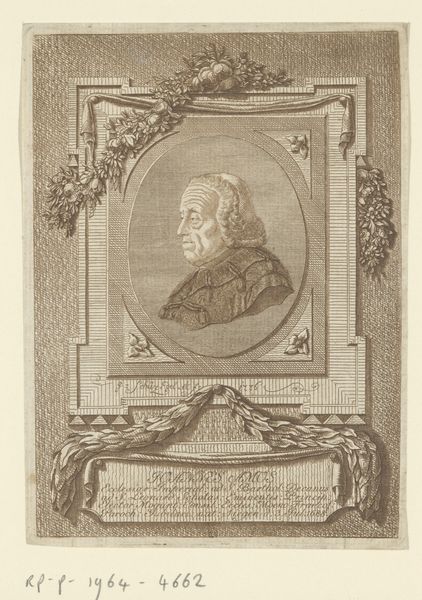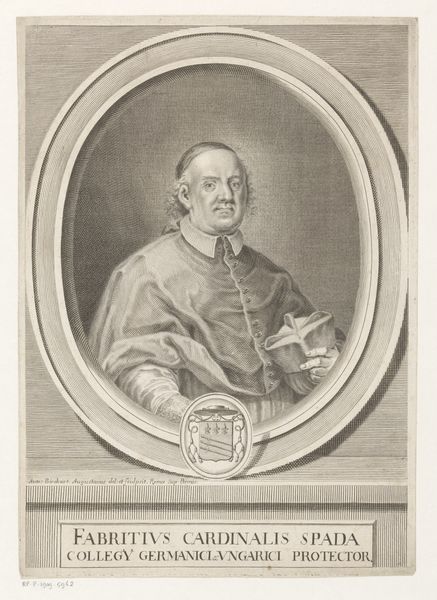
drawing, pencil
#
portrait
#
pencil drawn
#
drawing
#
neoclacissism
#
caricature
#
pencil drawing
#
classicism
#
pencil
#
history-painting
Dimensions: height 192 mm, width 154 mm
Copyright: Rijks Museum: Open Domain
Curator: This striking pencil drawing presents us with "Portret van de schilder Jacob Hendrik van Suchtelen," dating back to between 1757 and 1819, by Roeland van Eynden. Editor: The sitter certainly exudes a very definite air, doesn't he? There's an almost stern resolve etched into his profile, which this delicate pencil work captures surprisingly well. Curator: The drawing is very much in line with the Neoclassical aesthetic which was quite popular during that era, evoking the clarity, simplicity, and idealized forms inspired by antiquity. You see it in the formal arrangement, and the classic, clean lines. The ornate oval frame only accentuates that sense of timeless dignity. Editor: Yes, but look at the context. A master builder and someone keen to develop the arts and sciences in Nijmegen; that intersection itself speaks to Enlightenment values of public service and intellectual pursuit. It suggests a move towards rational, secular ideals. The formality is itself a political statement! Curator: Absolutely. It uses the visual language of its time, evoking power. What do you make of his powdered wig? To me, it speaks of a very specific social position and constructed identity. It wasn't just fashion. It communicated status, learning and refinement. Editor: Indeed! And it subtly underlines the power dynamics in that era. These aren't just neutral details. These were markers of privilege and access to cultural and intellectual circles which weren't afforded to all. So the question becomes: who had access to these refined representations and what messages were circulated as a result of that limited access? Curator: I see the value in those critical readings. For me, beyond these questions of representation and access, there is this enduring image of human dignity preserved across time. The sitter seems both present, and slightly enigmatic. Editor: Right. These representations provide tangible evidence to contextualize narratives about historical shifts and how society operated. Thank you for showing me this piece today! Curator: And thank you for engaging with this portrait of Jacob Hendrik, hopefully inspiring new conversations about the artwork and period to take place.
Comments
No comments
Be the first to comment and join the conversation on the ultimate creative platform.
